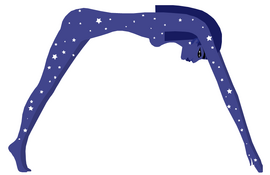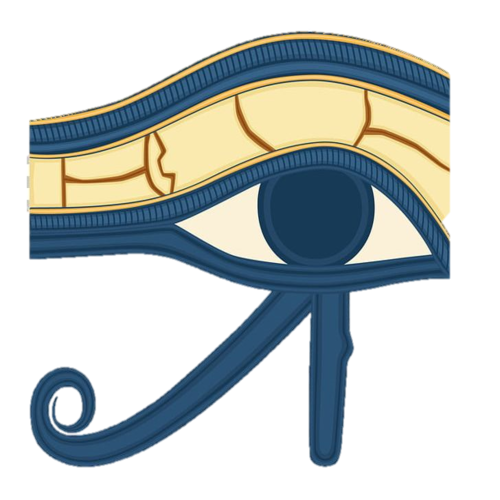| Nut | ||||
|---|---|---|---|---|
| Alternative spelling: Niut/Newet | ||||
"Night" | ||||
 Nut representing the heavens, without Geb below her. | ||||
| Period of worship |
Predynastic – Roman Period | |||
| Cult center | None | |||
| Titles | "Coverer of the Sky" "She Who Protects" "Mistress of All" "She Who Holds a Thousand Souls" | |||
| Symbol(s) | Night sky, stars, sycamore tree | |||
| Association | Sky | |||
| Appearance | Anthropoid, night sky, stars | |||
| Greek equivalent(s) |
Ouranos | |||
| Father | Shu | |||
| Mother | Tefnut | |||
| Spouse(s) | Geb | |||
| Issue | Osiris, Isis, Set, Nephthys | |||
In the Ennead mythology, Nut (alternatively spelled Nuit, Newet, and Neuth. Her name means "Night". Some of the titles of Nut were "Coverer of the Sky", "She Who Protects", "Mistress of All", and "She Who Holds a Thousand Souls".
Nut was the goddess of the sky and all heavenly bodies, a symbol of resurrection and rebirth. According to the Egyptians, the heavenly bodies would enter her mouth, traverse her skies and be reborn with dawn out of her womb. A sacred symbol of Nut was the ladder, used by Osiris to enter her heavenly skies. This ladder-symbol was called “maqet” and was placed in tombs to protect the deceased, and to invoke the aid of the god of the dead. She was the sky goddess, in contrast to most other mythologies, which usually have a sky father.
Nut is a daughter of Shu, god of the air, and Tefnut, goddess of moistness. Her husband was Geb, the earth, with whom she had 5 children: Osiris, Horus, Isis, Set, and Nepthys. In myth, she originally lay eternally having sex with Geb, but Shu (the air) later separated them, and it was said that if she ever returned to that position, chaos would reign (because the world was the bit that existed between the two). Nut was said to be covered in stars touching the cardinal points of her body.
Nut was seen as a friend and protector of the dead, who appealed to her as a child appeals to its mother: "O my Mother Nut, stretch Yourself over me, that I may be placed among the imperishable stars which are in You, and that I may not die." Nut was thought to draw the dead into her star-filled sky, and refresh them with food and wine: "I am Nut, and I have come so that I may enfold and protect you from all things evil." The ancient Egyptians said that every woman was a "nutrit" (little goddess.) Sometimes Nut was considered to be the daughter-wife of Ra, and to give birth to him each morning (the pink dawn sky being the blood of this birth.)
Nut was thought to be the barrier separating the forces of chaos from the ordered cosmos in the world. She was pictured as a woman arched on her toes and fingertips over the earth - her body, a star-filled sky. Nut's fingers and toes were believed to touch the four cardinal points or directions. She was often painted on the inside lid of the sarcophagus, protecting the deceased; the vault of the tomb was often painted dark blue with stars as a representation of Nut. Her headdress was the hieroglyphic of part of her name, a pot (which may also be a womb.) Sometimes Nut appeared in the form of a cow whose great body formed the sky and heavens, a sycamore tree, or as a giant sow, suckling many piglets, which represent the stars.
The Book of the Dead says, "Hail, thou Sycamore Tree of the Goddess Nut! Give me of the water and of the air which is in thee. I embrace that throne which is in Unu, and I keep guard over the Egg of Nekek-ur. It flourisheth, and I flourish; it liveth, and I live; it snuffeth the air, and I snuff the air, I the Osiris Ani, whose word is truth, in peace."
Originally she was the goddess of the nighttime sky, but in later time she was known simply as the sky goddess of all skies day and night.
References[]
Bibliography[]
- Collier, Mark and Manley, Bill. How to Read Egyptian Hieroglyphs: Revised Edition. Berkeley: University of California Press, 1998.
